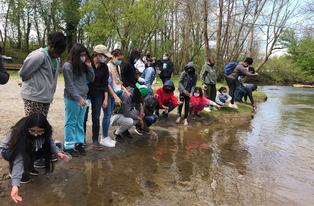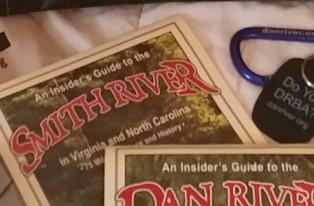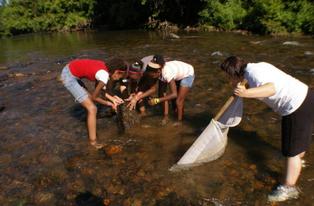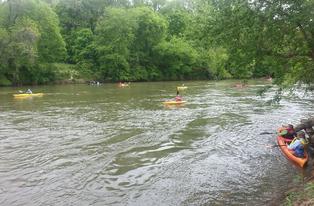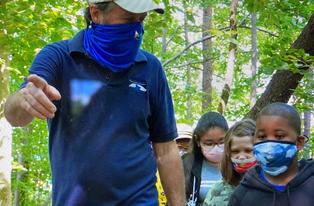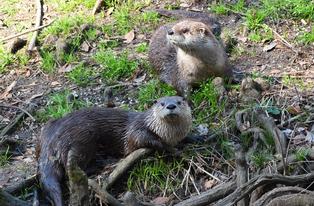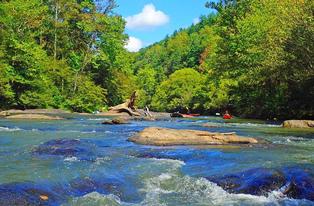
For Educators
Award Winning Environmental Education Programs & Partnerships
At the Dan River Basin Association, environmental education is at the heart of our mission. DRBA seeks to provide environmental education for all youth, regardless of background and demographics, in hope that many will want to protect the resources of the basin for future generations. Through DRBA's EE programs, youth are reconnected with their community creating a sense of ownership and civic responsibility with environmental action projects. A new excitement in education is found for many students with project-based, hands-on learning, and outdoor investigations. DRBA reaches nearly 8,000 youth annually with these experiences.
FOR MORE INFORMATION
Contact: Krista Hodges, Director of Environmental Education
Email: khodges@danriver.org
Phone: (276) 634-2592
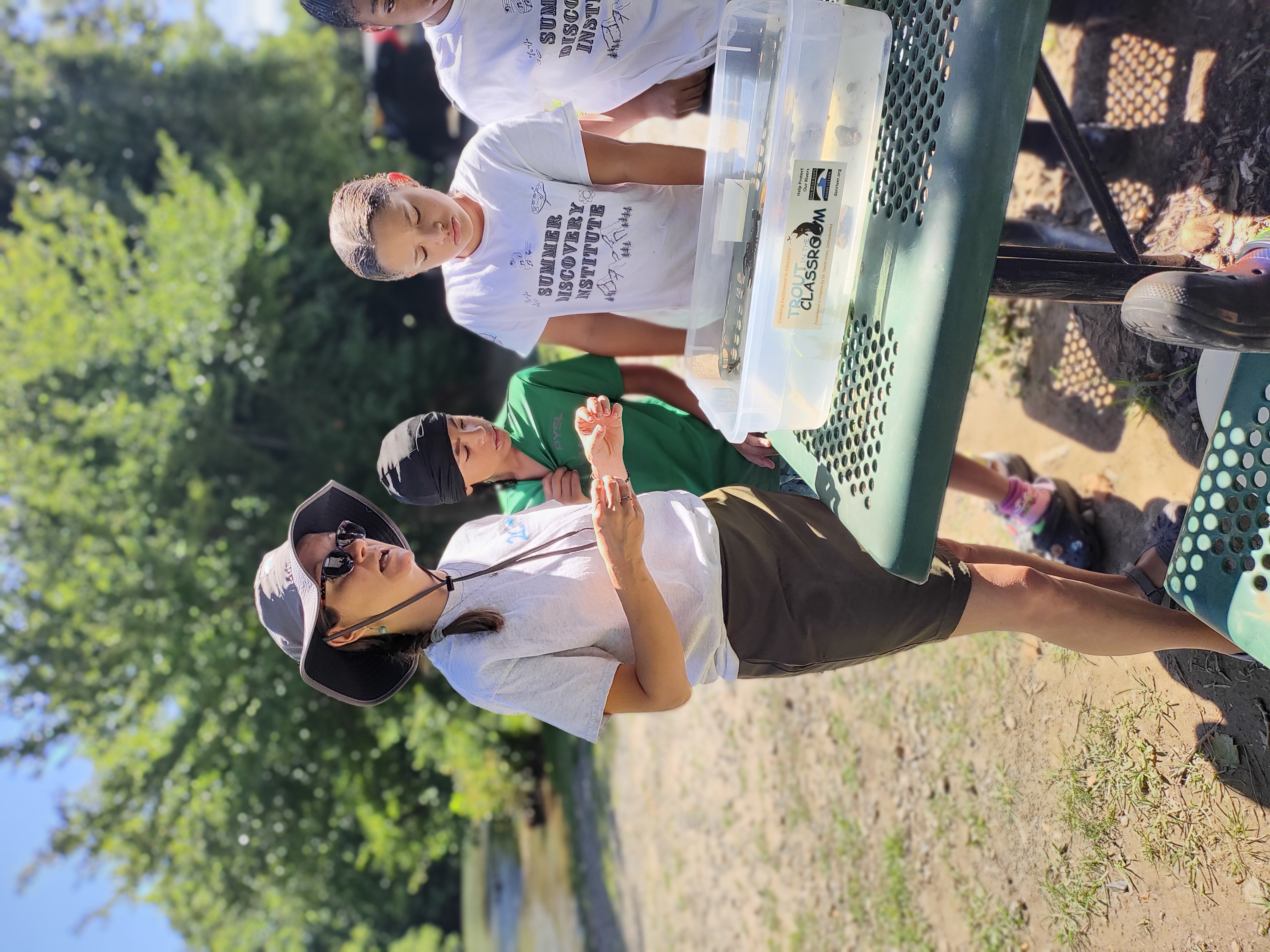
2024-2025 DRBA Environmental Education Report
2024 EE Survey Report
DRBA Catalog of Environmental Education Programs
DONATE NOW TO SUPPORT ENVIRONMENTAL EDUCATION
Check us out on the Blue Ridge PBS ECHO channel:
Macroinvertebrates at the Smith River
Watersheds at the Smith River
EE News!
Announcing the Love the Dan River anti-litter campaign for Danville Public Schools. Generously sponsored by The Community Foundation of the Dan River Region.
Third Grade Storm Drain Art Contest Winner
Congratulations to Rory Busby of Forest Hills Elementary for winning the third grade storm drain art contest this spring. He painted the storm drain at MC Martin Park in Danville in June 2024.
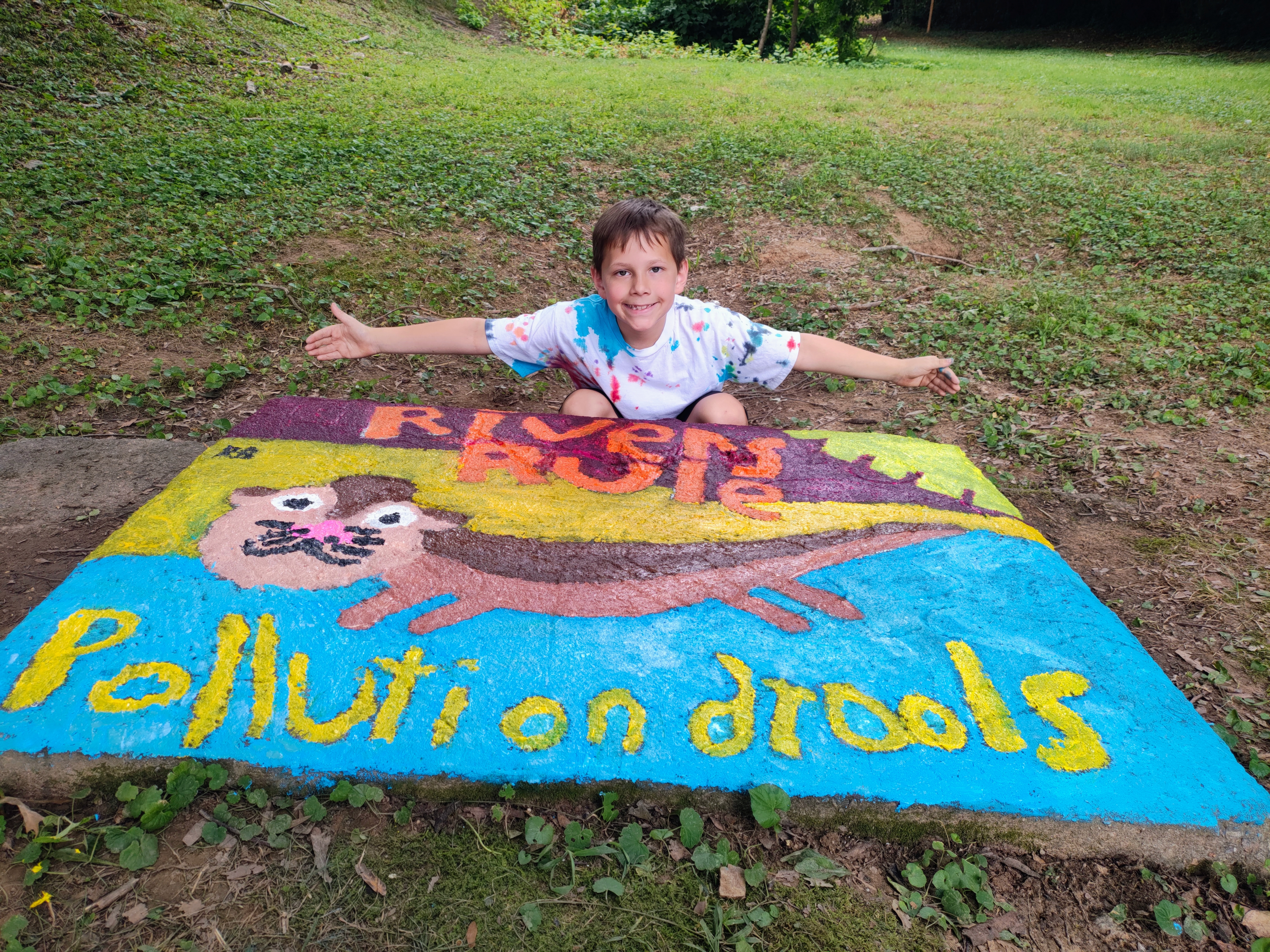
High School Anti-Litter Poster Contest Winner
Congratulations to Madison Barker of Tunstall High School for her winning submission to the poster contest. Her winning artwork was placed on the poster below that will be provided to all schools in the City of Danville.
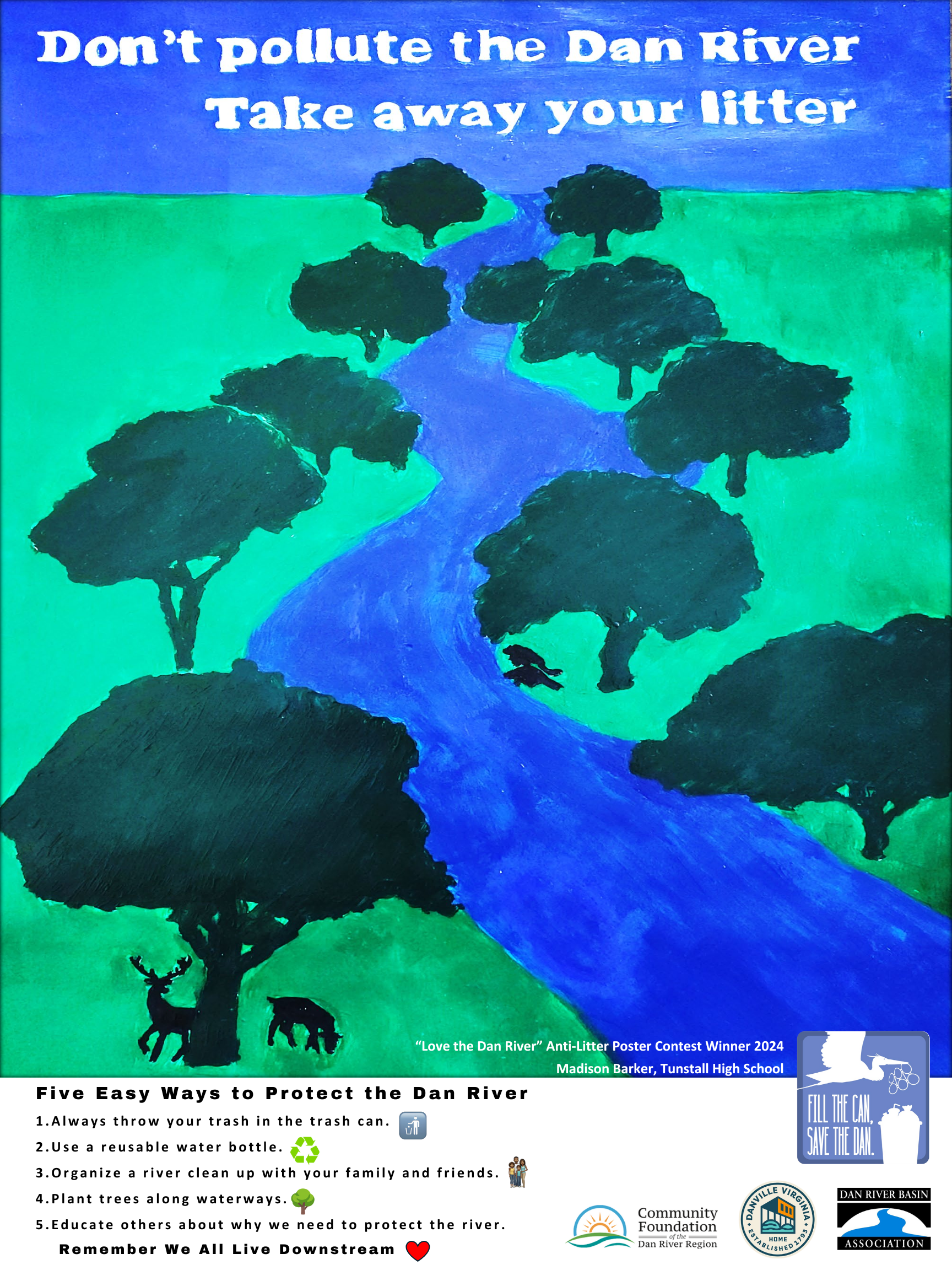
DRBA has an amazing menu of programs that bring nature to the classroom and the classroom into nature.
 Check out our new Eco Learning Portal in addition to the resources below.
Check out our new Eco Learning Portal in addition to the resources below.
DRBA's Environmental Education (EE) programs focus on improving academic success, inspiring environmental awareness and teaching an appreciation of the natural world for pre-school through high school. DRBA's EE connects students to their local watershed and you as an educator are the important link to that connection.
EE Benefits
- Outdoor play reduces obesity by building active, healthy bodies.
- Spending time outside raises Vitamin D levels.
- Exposure to nature and unrestricted play time is thought to reduce ADHD symptoms.
- Environmental education programs in schools help raise scores on standardized tests such as math, science, and writing.
- Environment based education programs can improve critical thinking skills.
- Children’s stress levels fall within minutes of exposure to natural settings.
- Hurried lifestyles can contribute to anxiety and depression.
- Play in nature helps enhance social interaction among children and build close relationships.
- Children can maintain a healthy vision by spending 3 hours a day outside.
EE in the Classroom
Educators can choose from several presentations including Tub O Bugs, Food Chains, Watersheds & Pollution and many other in-classroom presentations for K-12 students that meet both SOL and CORE requirements.
Nature Experiences
Water quality monitoring, hikes, river experiences, bio assessments and other outdoor programs are available to inspire students and help them retain information they learn in the classroom.
Forest School - a mini environmental education program for young children between the ages of 3-6 years old and their parents to get outdoors and spend time in nature together. This program is typically held once a year at Philpott Lake. The program is designed to introduce participants to a nature experience in a safe environment.
Project-Based Programs
Trout in the Classroom - a program DRBA has been offering for over a decade where students raise trout in their classrooms then travel to a river to release the trout into their natural habitat. Streamside presentations and other activities at the trout release make this a powerful program that students (and educators!) will not forget. The Southern Virginia TIC Program began in Southern Virginia in 2005 when local Orthodontist in Martinsville, Dr. David Jones, delivered fingerlings to area schools. The following season, eggs were delivered to the classes in the winter so the students could see a large portion of the trout life cycle before they released them. Dan River Basin Association adopted the program in 2008 and has maintained the program with support from generous donors and grants since then.
Streamside Trees in the Classroom - a hands-on program where students grow native seedlings in their classroom and then plant them as riparian buffer along a waterway. At the planting, students gain more knowledge through activities and presentations.
STIC Intro Video
Green Schoolyard
DRBA launched the first official Green Schoolyard in the basin at Albert Harris Elementary. The first phase of the project included a classroom composting program, Monarch Waystation butterfly garden, rain barrels, and interpretive signage. This is a great multi-year, project-based learning experience to launch at other schools throughout the basin! Contact DRBA to learn how we can get your Green Schoolyard going at your school.
How to Create Your Own Green Schoolyard PDF
Environmental Education Impacts Students' Careers PDF (VAST PDI 2020 Presentation)
VA SOL Correlation for Green Schoolyard Initiative
Butterfly Life Cycle Model Activity
Mini Coffee Can Composter Activity
Monarch Butterfly Coloring Sheets
Monarch Caterpillar Video
Green Schoolyard Video
Weather Station & Storm Drains Video
EE On Campus
DRBA offers storm drain marking, trail building, rain barrel, rain garden, outdoor classroom, art contests and other campus projects that get the entire student body engaged in protecting and conserving the environment.
Epic River Experiences
Through DRBA’s River Experiences, youth learn how to enjoy nature safely as they learn how to get in and out of a canoe, paddle and navigate a river, and the importance of wearing a personal flotation device (PFD) while on any paddling trip. Rotating through stations, youth also learn about water safety, paddling a canoe, river ecology through collection and identification of the aquatic insects, and water quality using hands-on test kits and supplies.
EDUCATOR RESOURCES
Create Your Own Environmental Literacy Plan for your school, created by the Virginia Association of Environmental Education. This document includes an example DRBA investigation.
2020 Early Trout Release Video - Due to schools releasing early and closing for the remainder of the school year, trout fingerlings in the classrooms had to be released early.
Riparian Buffer Assessment DRBA Outdoor Learning - Students will understand the importance of a riparian buffer. Students will assess riparian buffer and identify strategies to repair buffer. Students will understand the how buffers impact water quality.
Schoolyard Assessment Tool - Complete this schoolyard assessment with your students to see if your schoolyard is helping the Dan River and its tributaries.
Trout Life Cycle Wheel - A printable life cycle wheel that your students can use to study the life cycle of a trout.
Trout STEM Family Night - A complete lesson plan to develop your own Trout STEM Family Night for your students and families to participate in hands-on environmental science and investigate what caused their trout to perish.
Aquatic Macroinvertebrate Sorting and Identification Guide - A printable, easy to use aquatic macroinvertebrate ID guide designed by the Tip of the Mitt Watershed Council.
Identifying Aquatic Macroinvertebrates Worksheet - A printable used to determine the health of freshwater streams. Created by Boxerwood Nature Center in Lexington, VA.
Trout Egg Count/Mortality Record Sheet
Trout in the Classroom Cheat Sheet
Trout in the Classroom Water Quality Sheet & Feeding Log
Nature's Aquatic Engineer: Case-Building Caddisfly Lesson
Encased Caddisfly Body Cutout for Caddisfly Activity
Streamside Trees in the Classroom Manual
Virginia Department of Wildlife Resources - Teacher Resources
Virginia Department of Wildlife Resources Marsh Cam
Advanced DRBA Environmental Word Search
O. Berk Water Cycle Glossary of Terms
The Water Cycle, Cloud Formation, and Rainbows Explained
How to Create a Children's Nature Photo Flip Book
Trash Free Seas: CleanSwell App - Join a global movement to keep beaches, waterways and the ocean trash free.
Creek Critters App - Audubon Naturalist Society - Empowering People to Check the Health of their Local Streams
How to Make a Creek Critters Habitat!
How to Install a Bluebird Nesting Box
Litterati App - Be an Environmental Hero. Join the community that's cleaning the planet.
Conserve Your Resources - Earth Day Challenge
Water Pollution: How Humans Impact the Water Cycle
Doe Run Park Family Scavenger Hunt Guide
River Food Web Activity (Developed by Dan River Basin Association - Sponsored by the VA Department of Conservation and Recreation and The Harvest Foundation)
